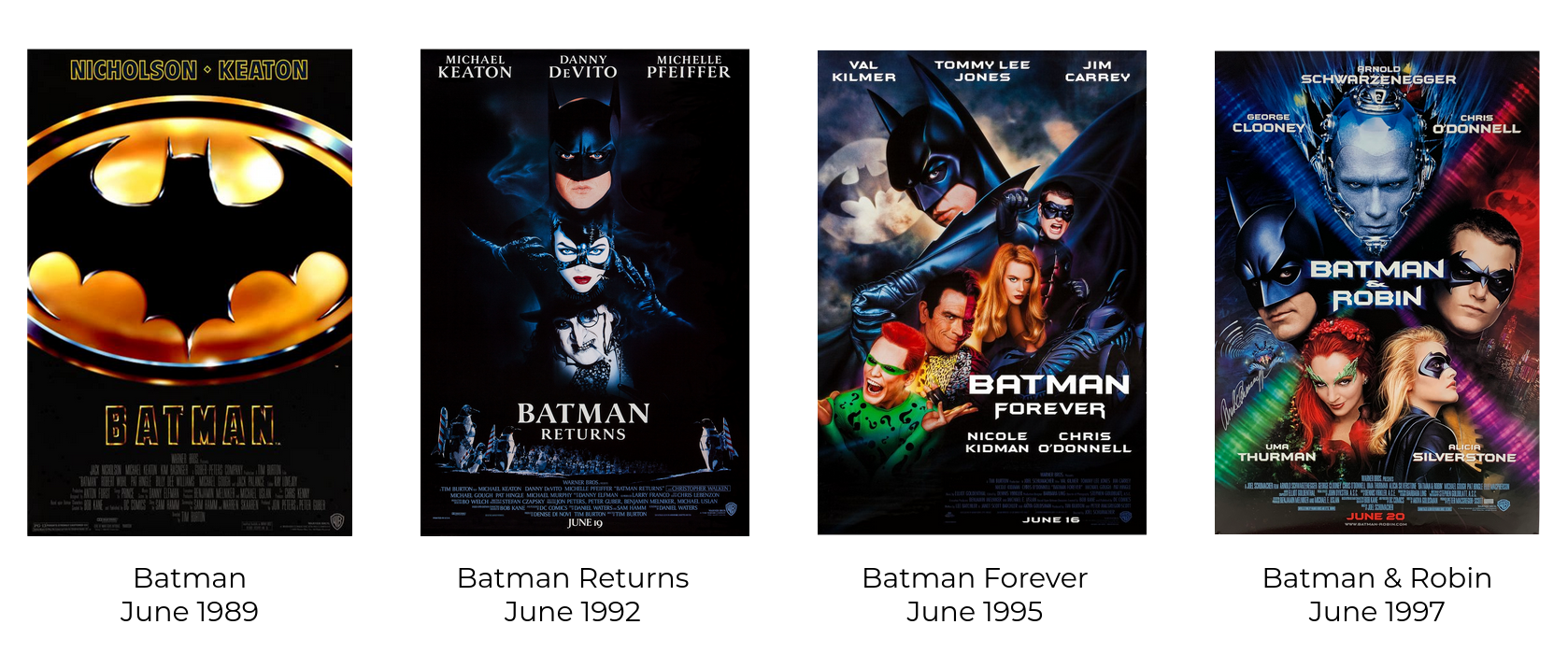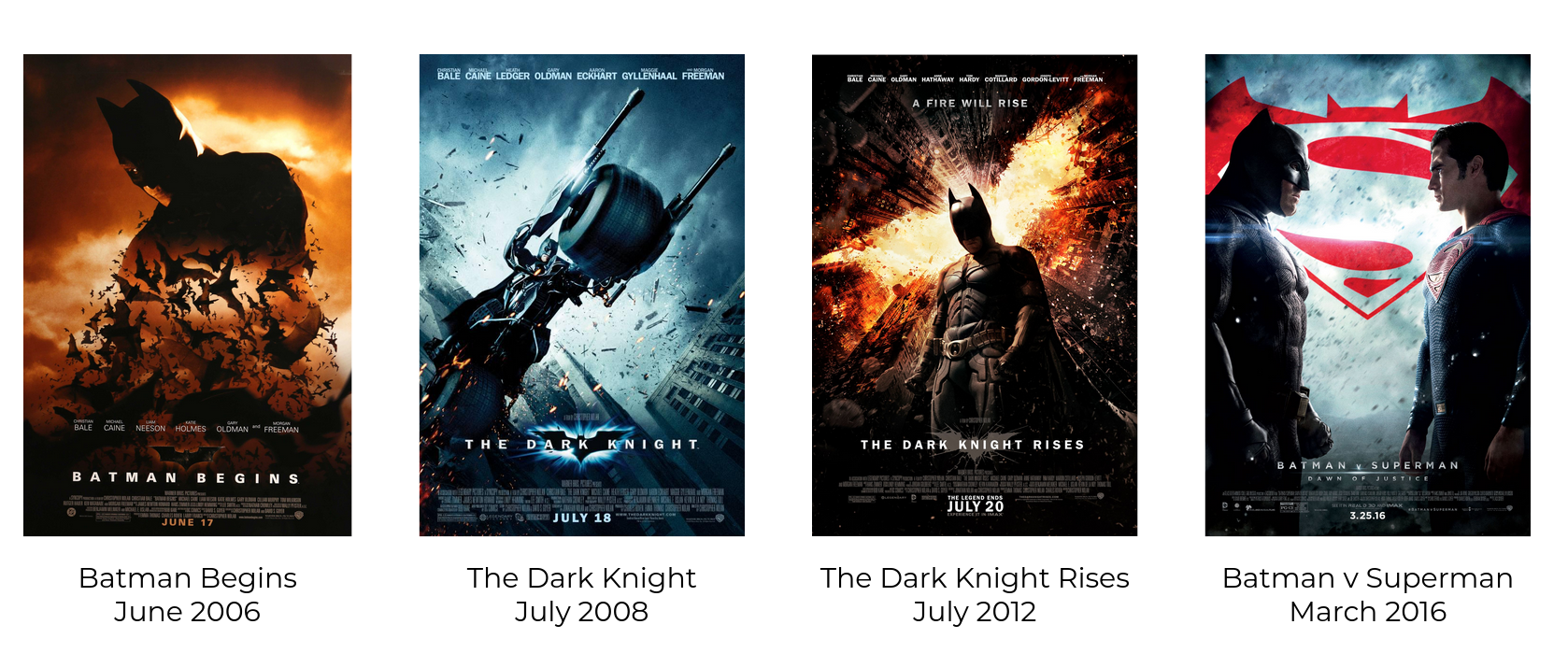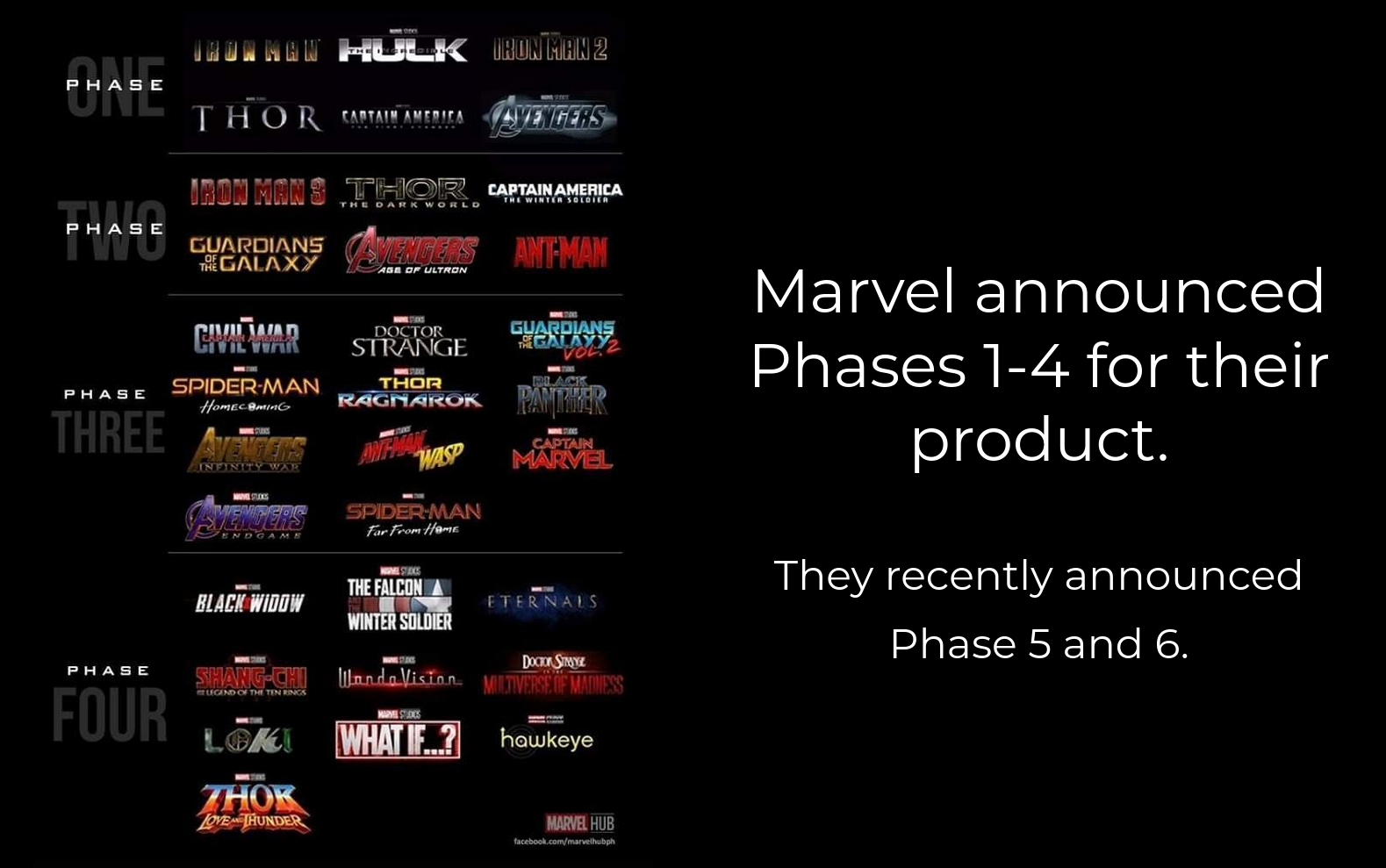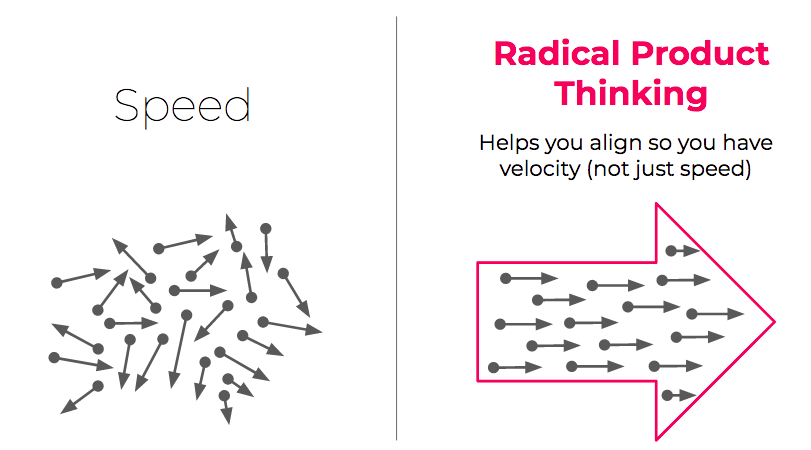The industry is abuzz with the term product-led (which I find misleading). It provokes an instinctual response, “Wait, weren’t we trying to be customer driven? Why product-led?” This article gives you a thoughtful and comprehensive guide on product-led transformation including why the product-led term is likely to trigger an allergic reaction in a large organization, what product-led actually means, and most importantly, how you can transform your organization to adopt a product mindset.
What is product-led transformation?
Product-led transformation means transforming your organization to being vision-driven. Traditionally, most companies have been either sales-led or engineering-led. Those that were engineering-led often built solutions in search of a problem and were often disconnected from what their customers actually needed. Sales-led companies, on the other hand, took the approach of building just about anything that would bring in revenues. If you’ve been in a sales-led organization, you’ve likely experienced a focus on making customers happy in the short term but ultimately missing out on the large-scale opportunity.
Both these approaches make it hard to scale and grow companies in the long term. Product-led transformation is about being vision-driven instead of being either engineer-led or sales-led. It means transforming your company to adopt a mindset where you start with a clear vision of the problem you want to solve, and systematically translate that vision for change into reality.
Why product-led transformation gets a bad name
The terminology of “product-led” sounds like a power-play in your organization. If the sales team or the engineering function have traditionally been the centers of power, introducing the idea of being “product-led” might be met with the same warmth as an attempted coup d’etat. To avoid a backlash from other functions in your organization it’s best to avoid the term “product-led” and instead use a term that explains what you’re really aiming for: being vision-driven.
What does being product-led or vision-driven mean?
The power of being product-led vision-driven rather than sales-led is best illustrated through a comparison between DC and Marvel.
DC was sales-led
DC had a short-term focus on creating a yearly summer blockbuster. You can see this reflected in the movies they released: when Batman was a box office success in 1989, they released Batman Returns in ‘92, followed by Batman Forever in ‘95, and the worst superhero movie of all time, Batman & Robin in ‘97. Each release was an iteration on the theme that they had found to be successful with their customers.
 Batman releases over and over again
Batman releases over and over again
After the disaster of Batman & Robin, DC needed to do better. But instead of rethinking their product, what did they release? Another Batman movie. But at least Batman Begins (starring Christian Bale) was significantly better, and DC followed that up with The Dark Knight and The Dark Knight Rises. Perhaps once that series was done, they would take a crack at something new?
 DC stuck to the theme of Batman forever…
DC stuck to the theme of Batman forever…
No, what they released instead was Batman v Superman – a let-down of a superhero movie that viewers described as “overwhelmingly disappointing” that just added Superman to the exhausted theme of Batman. Would DC rethink its product after this?
 Here we go again…
Here we go again…
Nope. In 2022 DC released The Batman, yet another Batman reboot. These releases illustrate a pattern of being sales-led – focusing on the short-term by creating small iterations on the status quo to drive short-term revenues but completely lacking in a long-term vision.
Marvel was vision-driven
Unlike DC, Marvel took a vision-driven approach. Marvel was on the verge of bankruptcy in the late ‘90s having sold off its major characters such as Spiderman and X-Men. It needed to rethink its product and the team was systematic in translating a vision for change into reality.
Vision:
Kevin Feige, now President of Marvel, rose through the ranks because he studied Marvel’s comic books and had a vision for the company. Instead of relying on a couple of major characters, his vision was to create movies around a universe of interconnected characters that were true to Marvel’s comic books which are often a profound commentary on society and human issues. No other studio had attempted this before.
Strategy:
A clear vision was only the first step. Marvel needed a strategy that was centered on the needs of moviegoers. Described in the RDCL Strategy framework, where RDCL stands for Real pain points, Design, Capabilities, and Logistics, Marvel had to start with the R by asking, “What makes a moviegoer come to the Marvel Cinematic Universe (MCU)?” The answer is that much like what interests readers in comic books, moviegoers want to feel like insiders in a universe where they see themselves reflected in different superheroes and get to know them through their stories.
The Design or solution to viewers’ needs was to build interconnected stories around a range of characters where viewers feel like they get the inside scoop on the superhero in each movie (think of the popularity of Marvel’s end-credit scenes).
In terms of Capabilities to power this Design, Marvel had to buy back some of the B-list characters they had sold off, for example Thor and Hulk, to build this universe. Finally, in terms of Logistics, they had to ask, “How will we deliver this solution to viewers?” Their solution (movies) had to work financially – they had $500M to make 10 movies. This element of their strategy meant that to fit their business model, they had to hire talented actors who weren’t too famous at the time, e.g. Robert Downey Jr. Compare this to DC’s approach of hiring well-known actors to play Batman – DC was steeped in the traditional view that only well-known actors and A-list superheroes would attract moviegoers to theaters.
Prioritization and roadmap:
Marvel then translated this strategy into a set of priorities and a roadmap – they announced phases 1-4 of their character development to fans long before these movies were released. Recently Marvel announced phases 5 and 6.
 Marvel shared a roadmap long before many movies were released
Marvel shared a roadmap long before many movies were released
Hypothesis-driven execution:
Lastly, in being vision-driven, Marvel wasn’t just launching this long-term plan hoping that it would resonate with viewers. Long before the first Iron Man movie was released in 2008, The Marvel team tested their hypothesis that the success of a movie was determined by storytelling and not whether the superhero character was well-known. This hypothesis was tested with the release of Blade in 1998 that was based on an unknown vampire character from Marvel comics. On a budget of $45 million, Blade earned $130 million worldwide and a cult following. Its success validated Marvel’s hypothesis and set the stage for the MCU.
In taking this vision-driven approach, the MCU has become the highest-grossing franchise and has made Kevin Feige the highest-grossing movie producer of all time. Marvel went from bankruptcy to producing 10 out of the top 30 highest-grossing movies of all time. In comparison, in being sales-led, DC has produced only one out of the top 30 highest-grossing movies of all time.
Product-led transformation is about becoming a vision-driven organization and, like Marvel, systematically translating a vision for change into reality.
 Marvel’s vision-driven approach led to financial success
Marvel’s vision-driven approach led to financial success
What are the benefits of being product-led or vision-driven?
There are three main benefits to transforming to become product-led vision-driven.
1. Better financial results in the long term:
Product-led transformation can help you realize financial benefits. In being sales-led DC saw short-term revenues every year, but ultimately missed out on the larger opportunity. In being vision-driven, Marvel found the global maximum (the highest-grossing franchise) instead of settling for a local maximum (an occasional blockbuster).
2. Avoid product diseases:
Product diseases are easy to catch when you’re not vision-driven. They’re often demoralizing to employees and fatal to innovation. A common disease in sales-led companies is Obsessive Sales Disorder (OSD). DC was focused on short-term revenues and creating a yearly blockbuster without a vision for the franchise in the long term. It’s only after seeing MCU’s success that DC has announced its own DCU.
On the other hand, in engineering-led companies a common disease is Narcissus Complex. This happens when we’re so focused on our own goals and looking inwards that we become disconnected from what our users actually need. Our products or features may address our own itch without addressing our users’.
These diseases occur whenever there’s a break in the chain as you translate a vision into action. Being product-led/ vision-driven helps you avoid these diseases because you’re systematically translating a vision into strategy, then priorities, and hypothesis-driven execution and measurement.
3. Increase employee engagement and commitment:
Gallup polls show that only 32% of full- and part-time employees are now engaged in their workplace. What’s worse is that active disengagement increased by two percentage points from 2021 and four points from 2020.
When you give employees clarity in direction through a detailed vision and strategy, you give them a shared purpose. And taking the Radical Product Thinking approach to prioritization and hypothesis-driven execution feels more fulfilling for employees because it leads to collective learning and seeing progress along the way as they deliver on a shared goal.
To realize these benefits, you need to develop a product mindset in your organization, in other words, you need to transform from a product to a project mindset.
What is the difference between a project and a product mindset?
Many organizations that want to be vision-driven, i.e. product-led, recognize the importance of product management and therefore change the title of project managers to product managers. But more than a title change, what’s needed is training to transform the mindset and develop a new set of skills.
A project manager is passionate about delivering a set of features on time and on budget. In contrast, a product manager is passionate about creating a change that she envisions (she delivers features to make progress towards the vision; the features themselves are not the end goal). The skills involved in project and product management are both important but the mindset of the project manager is fundamentally different from a product manager’s.
The product mindset is a strategic way of thinking – it means thinking about your product as a mechanism to create change. It means having clarity about the change you want to bring about and then systematically translating that into a strategy, a roadmap, and hypothesis-driven execution and measurement much like you read in the Marvel story above. The skills to take this methodical approach is essential if you want to be a vision-driven company. Building these skills across the organization is the essence of product-led transformation.
Do you need product-led transformation when you’re Agile?
Many companies just recently went through an Agile transformation, so your team might ask, “Why isn’t it enough to be Agile and build products based on customer feedback? Why the need to transform again?”
The transformation to Agile ways of working helps teams innovate faster. It’s like buying a fast car – it helps you drive faster. Yes, customer feedback is important. But customer feedback is the equivalent of stopping to ask for directions while you’re in your fast car.
But when you step back for a moment, you realize that before you start driving fast or asking for feedback to know if you’re heading the right way, YOU have to know where you’re going and roughly how you’ll get there, i.e. you need a clear vision and strategy to drive your Agile iterations and ask for feedback.
Lean and Agile alone can give you speed, but without a clear vision and strategy, speed can look like chaos. Product-led transformation means transforming the company to a product mindset where every product is driven by a clarity of vision and strategy and teams are aligned on the change they want to bring about together.
 RPT helps you align your team
RPT helps you align your team
The Radical Product Thinking framework for product-led transformation
Transformation framework for leaders:
If you’re a leader who wants to help transform your organization, you’ll need to start with a clear vision for transformation. Your vision should explain the problem statement and why you need to transform as an organization. Change is hard and the lack of a clear vision for why change is needed is a key reason why transformations often fail.
You’ll need buy-in across the organization on transformation and communicate what transformation means for each function. Instead of describing the product mindset in abstract terms, you’ll need to get each function in the organization to experience product thinking. Here’s the Radical Product Thinking approach for product-led transformation:
- Keynote talk for the company to share inspiring examples of companies that have transformed and practical tips on how individuals can apply RPT ideas to transform to a product mindset. A thought-provoking talk creates buy-in and momentum for transformation.
- Product management training to help product teams develop a clear vision for their product and translate it into their everyday activities. Additionally, coaching and support for teams solidifies this learning for the long-term.
- Engineering workshops to help managers, tech leads, and influencers in the engineering organization adopt a product mindset and understand the value of product management.
- Sales workshops that include hands-on exercises for sales and marketing teams to help them shift their thinking from a sales-led approach to a product thinking mindset.
- Leadership sessions to share learnings from across the organization and recommendations on any structural changes that might be needed to drive adoption of a product mindset.
Contact us to learn about Radical Product Thinking trainings and workshops for product-led transformation – we can customize and pick the sessions that are right for your organization.
Transformation tips for individuals:
If you’re an individual contributor who wants to learn more and adopt the product mindset you can work through the exercises in the following 5 steps. The Radical Product Thinking book gives you examples and serves as your guide as you work through these steps:
-
Define a clear vision for your product: Instead of a fluffy vision like “empowering people to do xyz”, craft a detailed vision that answers the following questions: Whose world are you changing? What’s their problem and how are they solving it today? Why does their world need changing? When will you know that you’ve arrived? And how are you going to change it for them? The Radical Vision Statement is a fill-in-the-blanks statement that helps you focus on your answers to these questions without wasting time on wordsmithing.
-
Build your strategy: Once you have a detailed vision, you need an actionable plan, i.e. a product strategy. You can craft a detailed product strategy that is grounded in your users’ real (not imaginary) pain points. A good strategy is a living document that you can troubleshoot over time and learn from – it’s part of your strategic planning process.
-
Communicate your rationale for prioritization: In order for your product to be successful, you have to balance the long-term vision against your short-term needs (survival). The RPT approach to prioritization helps you communicate trade-offs as you make progress toward the vision while managing urgent business needs. It helps you scale your influence and thinking across your organization.
-
Identify your hypotheses and metrics to validate them: Instead of relying on OKRs set from above or measuring popular metrics such as sales or time spent on site, you need to derive the metrics that are right for your product. For each element of your strategy, think about the hypotheses and metrics that’ll indicate if your approach is working.
-
Communicate and bring your team with you on the journey: Each of these elements of Radical Product Thinking (vision, strategy, prioritization, and execution and measurement) are designed to be communication tools. You can use each step to align your team so that instead of just speed, you have a shared sense of direction and therefore velocity.
Want to learn more about the product mindset and how you can transform your organization? You can read the Radical Product Thinking book, contact us to ask about workshops and training, or get the free toolkit.
FAQs
Shouldn’t you be customer-driven instead of being product-led?
Often being customer-driven and giving customers what they are asking for is a cover for being sales-led. If you’ve experienced being in a sales-led company, you know the feeling of chasing after short-term revenues by giving customers whatever they’re asking for but feeling directionless and lacking a clear long-term vision. Being sales-led leads to common product diseases such as Obsessive Sales Disorder and makes it hard to scale your organization in the long term.
What is product-led growth, and how is it different from sales-led growth?
Product-led growth means having clarity on the long-term vision and the problem that you’re setting out to solve. It means that your company’s growth (and sales) is primarily driven by the progress you’re making toward achieving that vision. Sales-led growth, in contrast, is more short-term driven – examples of this include pursuing projects or customizations that aren’t in-line with the long-term vision but that bring in revenues in the short-term. Sales-led growth often means trading-off the long-term vision in favor of short-term gains.
What’s the difference between a project and a product manager?
A project manager is given requirements while a product manager figures out requirements through user research. At the end of delivery, the project manager moves on to the next project while a product manager continues to work on refining and optimizing the product to make progress toward the vision and manages the product through its complete lifecycle from creation to sunsetting. A project manager’s role is more execution focused and requires coordination across individuals and teams to ensure that execution goes according to plan. On the other hand, the product manager’s role is more strategic although the role does require tactical skills: the product manager develops the vision and strategy and translates those into a roadmap and priorities and works with engineers and designers to translate priorities into execution.
What’s a good framework for product-led transformation?
A good framework for transformation needs to address the needs of the leader driving transformation and needs to give individuals practical tools to adopt a product mindset. The Radical Product Thinking framework for transformation gives leaders a systematic guide to getting buy-in for transformation across the organization and driving adoption of a product mindset and new way of working. It also offers individuals a step-by-step methodology for being product-led (i.e. vision driven).
